In smart cars, there are various types of chips, includingcontrol chips, computing chips, sensor chips, communication chips, storage chips, security chips, power chips, driver chips, power management chips, and other types of chips. Among them, computing and control chips are the core of smart cars, mainly divided into functional chips (MCU) and main control chips (SoC). MCUs typically contain only one processing unit, such as a CPU, while SoCs include multiple processing units, such as CPU, GPU, DSP, etc.
In addition, smart cockpit chips are also an indispensable part of smart cars. They adoptthe “CPU + functional module” SoC heterogeneous fusion scheme. Taking Qualcomm’s smart cockpit main control computing chip 820A as an example, this chip includes four major modules: a high-performance CPU, a GPU that supports multiple 4K ultra-high-definition touchscreen displays, a DSP that supports simultaneous input from eight camera sensors, and an LTE modem module that ensures continuous mobile connectivity. Furthermore, this chip can also be equipped with Qualcomm’s deep learning software development kit, thereby integrating advanced driver assistance systems based on machine learning.
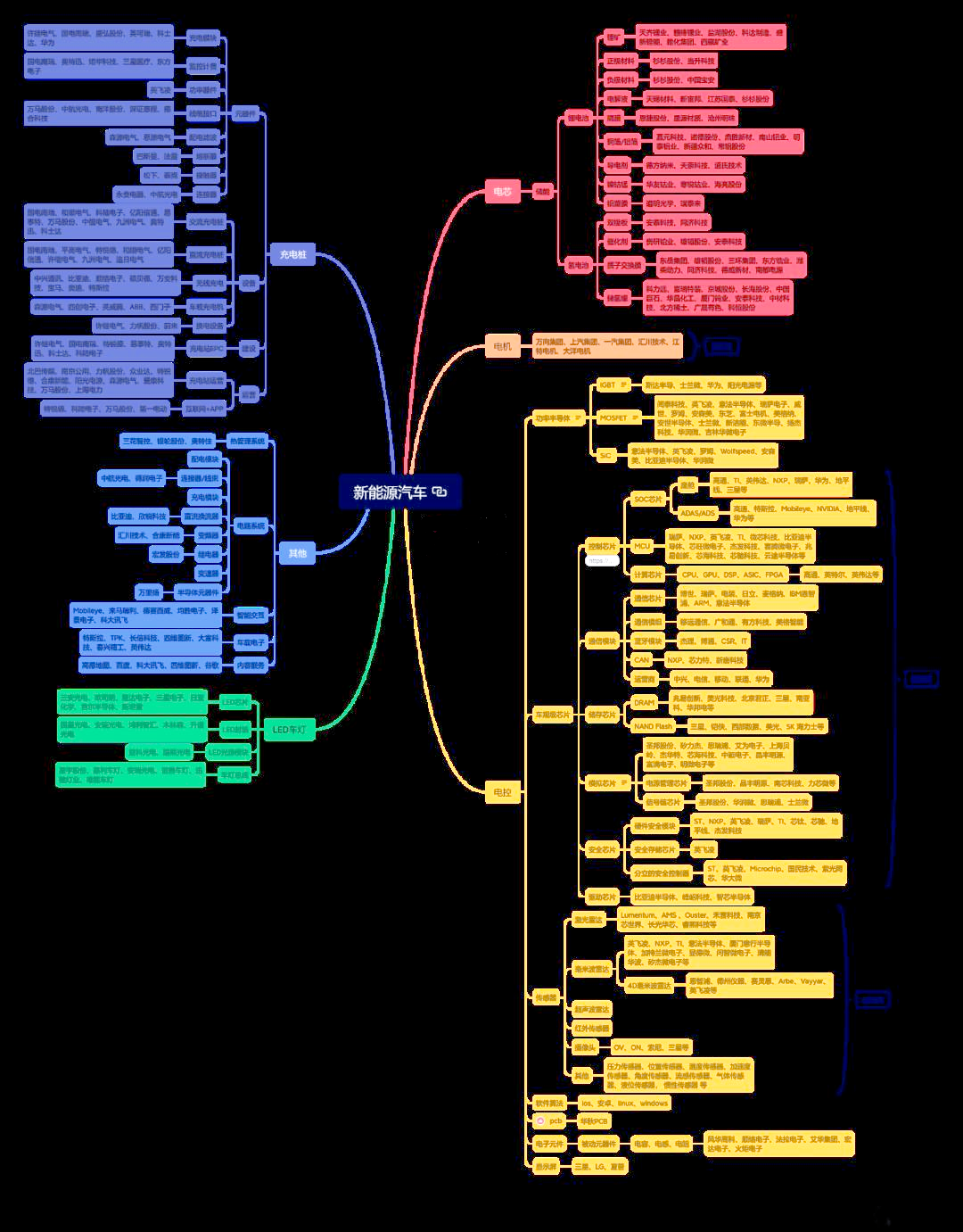 Control chipsCONTENT
Control chipsCONTENT
Control chips play the role of the “brain”, mainly focusing on power, chassis, and body, etc. According to data compiled by IC Insights, the automotive electronics MCU market is almost entirely dominated by Renesas, NXP, and Infineon.
MCU (Microcontroller)
Function: Responsible for real-time control, such as engine management, brake systems (ESP), body electronics (doors, windows, lighting), etc.
Characteristics: Low power consumption, high reliability, usually based on ARM Cortex-M/R series or traditional automotive MCU architectures (such as Renesas RH850, Infineon TC series).
Market share: Accounts for about 30% of automotive semiconductor usage, with a high dependency on traditional fuel vehicles.
Body control chips mainly use 8-bit or 32-bit MCU chips, which have relatively low computing power requirements. The body control domain integrates functions such as keyless start systems, anti-pinch for windows, and air conditioning control systems based on traditional body controllers, thus the main chips are still automotive-grade MCUs.
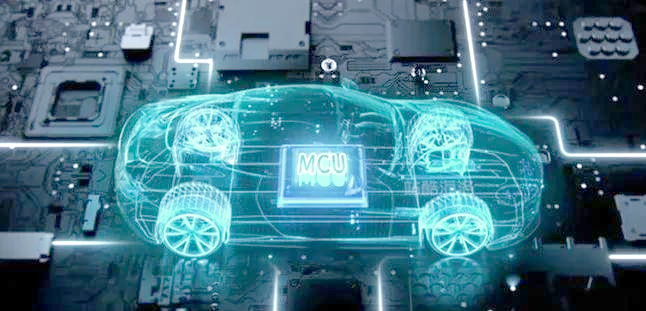
In recent years, Qichip Micro, Yuntu, and Zhixin have also gained momentum. Below are the parameters and characteristics of the three regional controller chips:
Qichip Micro
FC4150F2M (mass-produced): Cortex M core, up to 150MHz, 2MB P-Flash + 256K D-Flash, 256K SRAM.
FC7300F8MDT (mass-produced): Cortex M7 core, 2*LS+1, 300MHz, 8MB P-Flash (supports A/B swap), 256K D-Flash, Flash overlay, up to 1216K SRAM, packaged as 176LQFP-EP or BGA320.
Yuntu
YTM32B1M: M33 core, 120MHz, 64-144LQFP package, 256K-1MB Flash, compliant with AEC-Q100G1, ASIL-B.
YTM32B1H: M7 core, 300MHz, with 2 Lockstep, 257/289BGA package, 2M-8MB Flash, compliant with AEC-Q100G1, ASIL-D.
Zhixin
Z20K14x series: Based on ARM CORTEX M4F, main frequency 160MHz, 2M P Flash + 128K D Flash, 8-channel CANFD, 6-channel UART/LIN, meets ASIL-B.
Z20K3xx series (in development): Based on high-end ARM core, main frequency 320MHz, offering dual-core to six-core options, meets ASIL-B/D.
Sensor chipsCONTENT
Sensor chips are mainly used to detect and sense external signals, physical conditions, or chemical compositions, and convert them into electrical signals or other forms for use by other devices, such as radar sensors, image sensors, photoelectric sensors, biosensors, and magnetic sensors. Among them, the application of onboard cameras is the most widespread, as they can assist in autonomous driving and also monitor the interior of the vehicle. The core chips of onboard cameras includeCMOS image sensors (CIS) andimage signal processing chips (ISP).
CIS
In the rapid iteration of smart driving technology today, onboard cameras have become the core “eyes” of the vehicle, whileCIS is the “retina” of these eyes. As autonomous driving progresses from L2 to L4,L5 levels, the number of cameras in each vehicle has surged from single digits to double digits, leading to an explosive growth in demand for high-resolutionCIS chips.
However, the supply of this critical component has fallen into a “chip shortage” dilemma. The launch of BYD’s “God Eye” system, the popularization of Tesla’s full-vision solution, and the global automotive industry’s pursuit of advanced driver assistance functions have pushed the supply-demand contradiction of 8 million pixel (8M) onboardCIS chips to the forefront.In the future, whoever can achieve “a dual leap in pixels and production capacity” will occupy a commanding position in the visual revolution of autonomous driving.

ISP
ISP (Image Signal Processing) is the unit mainly used to process the output signals from front-end image sensors to match different manufacturers’ image sensors.
In the perception layer, the role of automotive-grade ISP chips is to optimize and convert the raw signals collected by image sensors (such as CMOS or CCD) into higher quality, clearer structure, more accurate colors, and lower latency digital images, providing critical input for subsequent visual perception, decision control, and other system modules.
In the autonomous driving perception system, ISP is the key link connecting the camera and the computing platform. It not only relates to the imaging quality of the images but also determines the perception accuracy and response speed of the entire autonomous driving system.
On one hand, the onboard environment is complex and variable, placing numerous demands on ISP processing algorithms, such as: high requirements for HDR capability and noise suppression in low light at night, strong contrast in backlight, fog/rain/snow weather; during high-speed driving, ISP must process image streams in real-time and ensure stable execution of functions such as distortion correction, image alignment, and distortion elimination;
Driver monitoring systems (DMS) and in-cabin behavior recognition systems (OMS) need to rely on ISP to accurately restore facial and eye details, supporting fatigue warning functions.
On the other hand, as the number of cameras in vehicles continues to increase (L2 level equipped with 6 cameras, L4 equipped with more than 8, L5 will exceed 11), ISP must have multi-channel video parallel processing capabilities and be able to adapt to high-resolution (such as 4K 60fps)) image inputs. This demand drives the joint evolution of high-performance SoC integrating ISP, independent ISP, and AI acceleration modules.
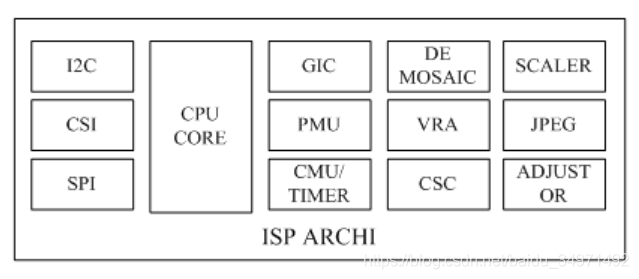
The above image shows the internal composition of ISP
Computing chipsCONTENT
Computing chips are mainly targeted at smart cockpit and smart driving chips.
In the current automotive E/E architecture, the computing power demand for smart cockpit large screens, multifunctional, and multi-mode human-machine interaction is clearly beyond what traditional MCU chips can meet, thus SoC chips are undoubtedly the mainstream of smart cockpit chips.
SoC stands for System on Chip, which typically integrates CPU, GPU, NPU and other processing units, capable of supporting high-performance computing, graphics computing, AI computing, audio processing and other functions, possessing powerful computing performance, and is also the key to achieving multi-hardware fusion control in cockpit domain controllers.
According to predictions by Huazhang Securities, by 2027, the smart cockpit SoC market scale could reach 5 billion USD, with domestic expectations reaching 1.5 billion USD.
Currently, the smart cockpit SoC market is still dominated by foreign giants, such as NXP’s i.MX series, Renesas’ R series, and TI’s Jacinto series. In addition, some consumer electronics manufacturers, such as AMD entering the cockpit market through Tesla, and NVIDIA, Qualcomm also enjoy a good reputation in the domestic market, especially Qualcomm’s 8155P which gained fame during the Great Wall Cat incident last year.
Domestic manufacturers such as Xinchip, Jiefa, Rockchip, Xinqing Technology, and Horizon have also joined the fray, such as Horizon’s Journey 5, Xinchip’sX9, and Rockchip’s RK3588M etc.

The above image shows Horizon’s Journey 5 ISP internal composition
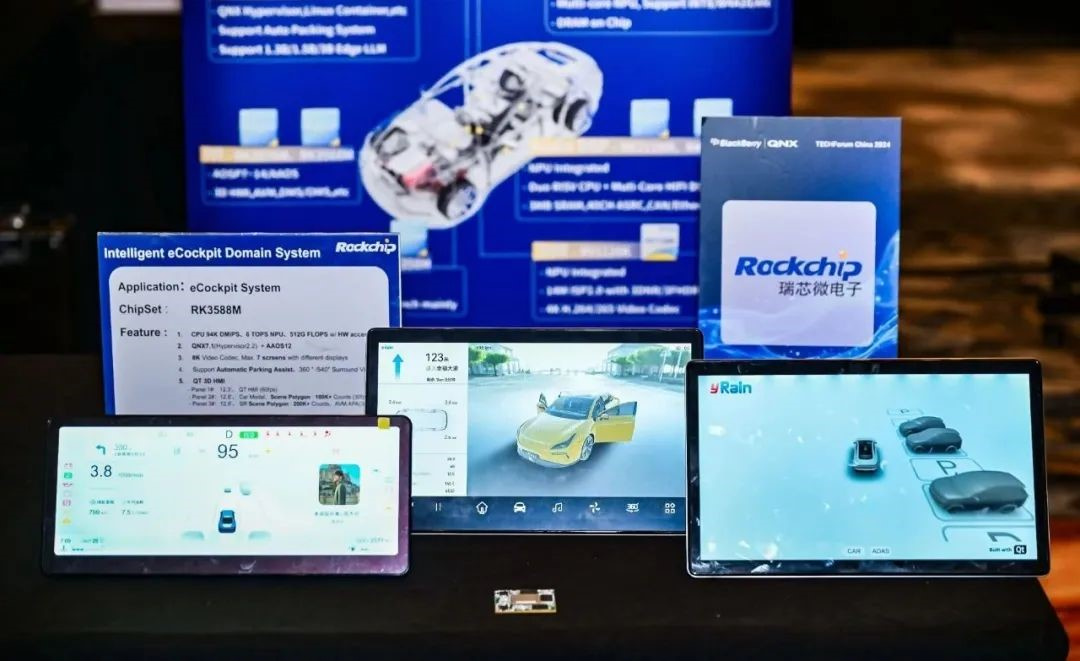
The above image shows Rockchip RK3588M
RK3588M adopts 8nm advanced process, equipped with a quad-coreA76+ quad-coreA55 octa-core CPU, 100K DMIPS CPU architecture, featuring 8K display/ video, native 7 screen display, 6Tops NPU, QNX Hypervisor, native 2 channel TypeC, dual 16M ISP and 12 channel cameras, etc. It is suitable for automotive instrument, smart cockpit, central control system, and infotainment domain control unit (DCU) applications.
Communication chipsCONTENT
Vehicle communication is divided into in-vehicle communication and external communication. For external communication, there are cellular data, satellite positioning, Bluetooth, wireless local area network, ultra-wideband (UWB) and Ethernet, while in-vehicle communication includes Ethernet, CAN, FlexRay, Lin etc.
CAN/LIN chips are mainly monopolized byNXP, TI, Infineon, ST and On Semiconductor; domestically, there are Beijing Junzheng, Xinlitai, etc.;
FlexRay is mainly monopolized byNXP and Renesas;
Ethernet PHY chips are monopolized byNXP, Broadcom, Realtek, Microchip, TI, etc., while domestically, there is a listed company on the Science and Technology Innovation Board, Yutai Microelectronics, which reportedly has already introduced 1000Base-TI PHY to customers. Ethernet switch chips are mainly monopolized by Broadcom, Marvell andNXP.
Taking CAN chips as an example, the Controller Area Network (CAN) bus technology has become an indispensable communication standard. As the core component in this field, the performance of CAN chips directly determines the stability and reliability of the entire system.
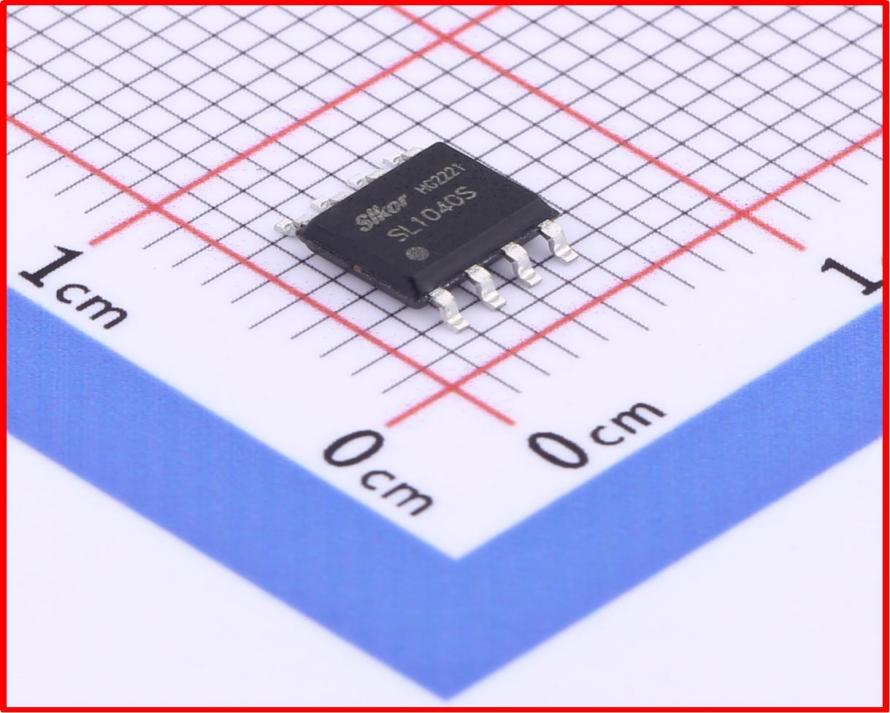
The above image shows Sako Micro’s CAN chip SL1040S
In the automotive electronics field, Sako Micro’s CAN chips demonstrate unique competitive advantages. In modern vehicles, from engine control units to body electronic systems, to advanced driver assistance systems (ADAS), real-time communication between various subsystems relies on the CAN bus network. Sako Micro chips have excellent electromagnetic interference resistance, capable of stable operation in extreme temperature ranges from -40℃ to 150℃, ensuring reliable vehicle operation under various climatic conditions.
The above introduces the four main components of smart car chips: control chips, sensor chips, computing chips and communication chips. These chips are key to the efficient operation of smart cars. In the next issue, we will continue to share other types of chips and explore the profound impact of chip technology development on smart car software technology. Stay tuned.
Reference original link:
https://blog.csdn.net/weixin_50366509/article/details/147105766
—end—